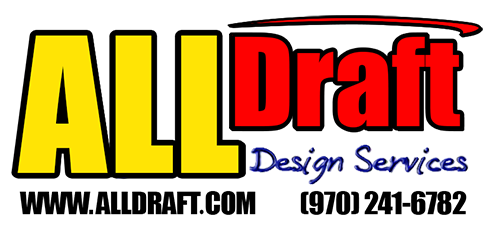In the realm of construction and engineering, as-built drawings are crucial documents that provide a detailed representation of a structure or infrastructure project upon its completion. These drawings serve as a valuable reference for future maintenance, renovations, and expansions, ensuring accurate documentation of the final built environment. In this comprehensive guide, we delve into the intricacies of as-built drawings, exploring their purpose, components, creation process, and significance in the construction industry.
Introduction to As-Built Drawings
As-built drawings, also known as record drawings or red-line drawings, are updated versions of the original design drawings, reflecting any modifications, deviations, or additions made during the construction phase. They offer a snapshot of the completed project, capturing the actual dimensions, locations, and configurations of structural elements, utilities, and other components.
Purpose and Importance
The primary purpose of as-built drawings is to provide an accurate representation of the constructed facility, enabling stakeholders to compare the final product with the initial design specifications. They serve several essential functions:
Documentation: As-built drawings document the precise location of structural elements, utility lines, equipment, and other features, facilitating maintenance, repair, and renovation activities.
Compliance: They ensure that the constructed facility complies with building codes, regulations, and safety standards, providing essential documentation for regulatory approvals and inspections.
Accountability: As-built drawings hold contractors, architects, and engineers accountable for the accuracy and quality of the construction work, serving as a reference for future audits or legal disputes.
Planning: They serve as a valuable reference for future expansions, renovations, or infrastructure upgrades, helping stakeholders make informed decisions about modifications or improvements.
Components of As-Built Drawings
As-built drawings typically include a range of information, depending on the complexity of the project and the specific requirements of stakeholders. Some common components found in as-built drawings include:
Site Plan: A bird’s-eye view of the project site, showing property boundaries, access roads, parking areas, landscaping features, and other site-specific details.
Floor Plans: Detailed drawings of each floor or level of the building, indicating the layout of rooms, walls, doors, windows, and major structural elements.
Elevations: Drawings that depict the exterior facades of the building from various viewpoints, showing architectural details, finishes, and building heights.
Sections: Cross-sectional views that cut through the building to reveal internal features such as structural framing, floor-to-ceiling heights, and mechanical systems.
Mechanical, Electrical, and Plumbing (MEP) Systems: Diagrams illustrating the layout of HVAC ductwork, electrical wiring, plumbing pipes, and other utility systems within the building.
Details and Specifications: Additional drawings and notes that provide specific details about construction materials, finishes, dimensions, and installation methods.
As-Built Drawings Includes
As-built drawings are comprehensive records that depict the final, completed state of a construction or engineering project. They typically include:
Modifications and Changes: As-built drawings document any alterations or deviations from the original design plans that were made during the construction process. These changes could be due to unforeseen site conditions, design revisions, or client requests.
Actual Dimensions: They incorporate accurate measurements and dimensions of all components, structures, and systems installed during construction. This ensures that the final built environment matches the intended design specifications.
Location of Utilities: As-built drawings often show the precise locations of utilities such as electrical wiring, plumbing pipes, and HVAC (Heating, Ventilation, and Air Conditioning) systems. This information is crucial for maintenance and future renovation or expansion projects.
Material Specifications: They detail the types of materials used in construction, including their quality, grade, and specifications. This helps in identifying suitable replacement materials for maintenance or repairs.
Structural Details: As-built drawings provide detailed information about the structural elements of buildings or infrastructure, including beams, columns, foundations, and load-bearing walls. This information aids in assessing the structural integrity and stability of the completed project.
Finishes and Fixtures: They indicate the finishes applied to surfaces (such as paint, flooring, and wall coverings) and the installation locations of fixtures (such as light fixtures, plumbing fixtures, and built-in furniture).
As-built Surveys: As-built drawings may incorporate survey data to accurately depict the site conditions, topography, and boundary lines after construction is completed.
Legal and Compliance Documentation: As-built drawings may include any necessary documentation to demonstrate compliance with building codes, zoning regulations, and other legal requirements.
Overall, as-built drawings serve as a valuable reference for facility management, maintenance personnel, and future construction projects, providing a comprehensive record of the completed infrastructure.
Creation Process of AsBuilt Plan
Creating accurate as-built drawings requires meticulous attention to detail and close collaboration among various stakeholders, including architects, engineers, contractors, and surveyors. The process typically involves the following steps:
Site Verification: Surveyors visit the construction site to verify the accuracy of existing conditions, taking measurements and documenting any deviations from the original design plans.
Data Collection: Contractors and subcontractors provide updated information about changes, modifications, or additions made during the construction process, including revised drawings, specifications, and material lists.
Drawing Updates: Draftsmen or CAD technicians use the collected data to update the original design drawings, incorporating changes, annotations, and revisions as necessary.
Quality Control: A thorough review process ensures the accuracy and completeness of the as-built drawings, with careful attention paid to discrepancies, inconsistencies, or missing information.
Final Approval: Once the drawings are finalized, they are typically reviewed and approved by the project stakeholders, including the owner, architect, and engineer, before being distributed for use.
Significance in Construction Industry
As-built drawings play a crucial role in the construction industry, offering numerous benefits to stakeholders at every stage of the project lifecycle:
During Construction: They serve as a reference for contractors and subcontractors, helping them understand design intent, coordinate work activities, and resolve conflicts or discrepancies.
After Completion: They provide facility managers and maintenance personnel with essential documentation for ongoing operations, maintenance, and repair activities, reducing downtime and costs.
For Future Projects: They serve as a valuable resource for architects, engineers, and developers working on similar projects, offering insights and lessons learned that can inform future design and construction efforts.
Challenges and Best Practices
Despite their importance, creating and maintaining accurate as-built drawings can present several challenges, including:
- Inaccurate or outdated information.
- Poor documentation practices.
- Lack of coordination among project stakeholders.
- Changes made without proper authorization or documentation.
- To address these challenges, industry professionals should adhere to best practices such as:
- Establishing clear documentation protocols and standards.
- Conducting regular site inspections and surveys to verify existing conditions.
- Maintaining open communication and collaboration among project team members.
- Implementing digital tools and technologies for more efficient data collection and drawing updates.
In conclusion, as-built drawings are essential documents that provide a comprehensive record of a construction project’s final as-constructed state. They serve as a valuable reference for stakeholders, offering insights into the completed facility’s design, layout, and systems. By following established best practices and leveraging modern technology, construction professionals can ensure the accuracy and usefulness of as-built drawings, contributing to the success and longevity of built environments for years to come.

